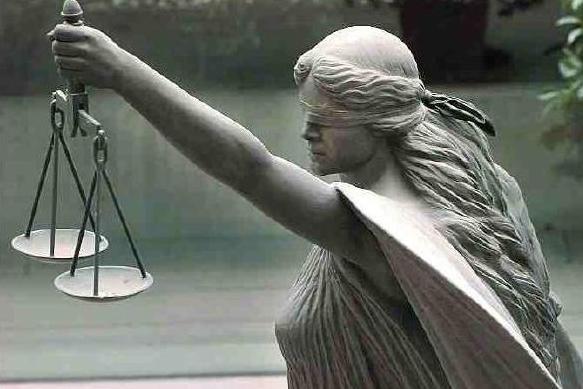Luke Gehman is a member of Professor Patrick Schmidt’s Civil Liberties class at Macalester College in St. Paul, Minnesota. This article is part of an ongoing series of submissions written by students and selected for publication on the LOTL blog.
One of the great symbols of law in the western world is Lady Justice. Seen in courtrooms throughout the United States, Lady Justice’s blindfold and scales represent objectivity and fairness in our legal system. These characteristics are central to how Americans believe the judicial branch should operate. Americans believe the judiciary should be blind to personal opinion, individual bias, and, most importantly, politics.
Recently, though, Americans have not been pleased with the level of objectivity in our nation’s highest court. Public approval of the Supreme Court is at an all-time low. According to a recent poll by the New York Times, only 44% of Americans approve of the highest court in the nation, and 76% say that Supreme Court Justices are sometimes influenced by their own personal or political opinions. Increasingly, Americans are becoming more cynical about the way the Court makes its decisions.
There is, however, a recent case that may ease cynicism about the Court’s process. On March 26th the Court released its decision in Florida v. Jardines. Although the Court was divided in its ruling (5-4), it was not divided along traditional liberal-conservative lines. The conservatives were split, with Justices Scalia and Thomas joining the majority and Justices Alito and Roberts dissenting. While three of the Court’s liberal Justices (Kagan, Sotomayor, and Ginsburg) signed on with Scalia, the majority still failed to capture the fourth liberal Justice, Steven Breyer. Justice Kennedy, often the fifth vote for the majority in 5-4 decisions such as this one, found himself dissenting.
What is it that has the Court so mixed up?
Jardines is a case about the 4th Amendment, which protects individuals from unreasonable searches and seizures. The issue is whether the use of a trained police dog to sniff for drugs just outside a person’s house constitutes an unreasonable search. In previous cases, the Court had ruled that dog sniffs don’t constitute a search (United States v. Place, Illinois v. Caballes). The difference in Jardines was that the search was of someone’s home and took place on their property. This elicited concerns from both conservative and liberal Justices.
One concern, and the basis for Scalia’s argument in the majority opinion, is that such a search constitutes a trespass on a person’s property and is a violation of their property rights. This type of emphasis on the importance of property rights is typical of conservatives such as Scalia, but in this case the liberals (save Breyer) joined in, agreeing that bringing a police dog up to the front door to search for drugs constituted a trespass on private property.
Another concern, voiced by Sotomayor, Kagan, and Ginsburg in their concurring opinion, was that the search violated the homeowner’s privacy rights. Justice Kagan, writing the concurrence, compared bringing a drug sniffing dog to the front door of a home to walking up to the house and using a pair of binoculars to peer through the windows. “Like the binoculars,” Kagan writes, “a drug-detection dog is a specialized device for discovering objects not in plain view (or plain smell).”
So it would appear that both the liberals and the conservatives have good reasons to join the majority in this case. What, then, explains the dissent of Alito, Kennedy, Roberts, and Breyer?
Alito argues in his dissent that, according to traditional laws of trespass, individuals (including police) can walk up to the front door of a house without trespassing. According to Alito, just because the police officer in the case was accompanied by a drug sniffing dog doesn’t mean it was a trespass. Alito further writes that the “reasonable expectation of privacy” test that the Court adopted in a previous case (Katz) wasn’t violated, because a person would know that odors emitting from his/her house could be smelled by someone (or something) out in a public space.
Alito, Kennedy, Roberts and Breyer thus base their dissent upon previous Court rulings, and on law regarding trespass. They forgo the opportunity to advance property rights (a traditionally “conservative” cause) or the right to privacy (a traditionally “liberal” cause) in favor of what they viewed as more applicable legal authority.
How could three of the Court’s most “liberal” Justices join two of its most “conservative” to form a majority? Of course Kagan, Sotomayor, and Ginsburg broke away from Thomas and Scalia to write a separate, supposedly more “liberal,” concurrence addressing privacy, but why then did the Court’s fourth “liberal” break away to side with the likes of Alito and Roberts in the dissent?
Whichever way you look at it, Jardines defies the liberal-conservative view of the Supreme Court. Perhaps the Court’s ideological divisions are less pronounced than we suppose.









